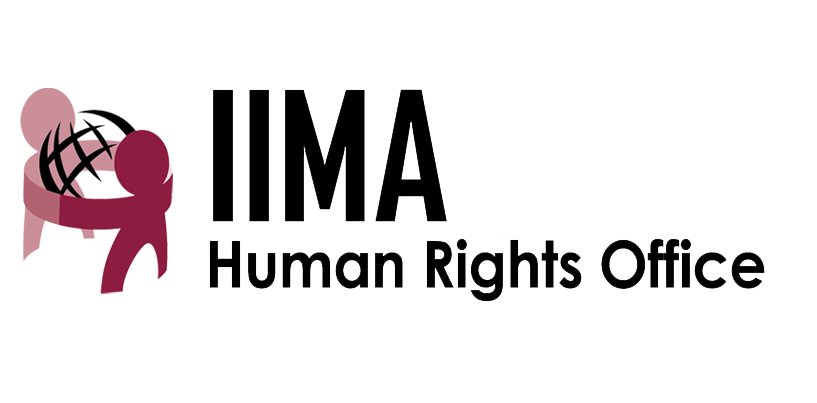
Children and youth defending human rights
“I was a victim of several floods generated by multiple typhoons. Once the Pasing river overflowed and submerged our house, almost reaching the second floor. That was the time in 2009 when I became a more active defender of the environment, I saw the need and felt the strong desire to do something concrete about that.”
This is Zarah De Guzman from VIDES Philippines who shares her experience. Now she is 23, but her story brings us back to when she was 14. On September 28th she was invited to share this story and participate at the Day of General Discussion on “Protecting and Empowering Children as Human Rights Defenders” organised by the Committee on the Child’s Rights. Here is the link to the event: https://www.ohchr.org/EN/HRBodies/CRC/Pages/Discussion2018.aspx
From Manila to Geneva, she brought with her the stories of the difficulty of living in a delicate environment often victim to the fury of typhoons, but she also brought her determination to act.
Zarah attended the International Institute Maria Ausiliatrice in Manila, where she started being interested in protecting and safeguarding the environment. As a child, she took care of the common good by recycling, crafting objects with recycled material, and performing in concerts advocating for the protection of the Earth. When growing up, she realised she wanted to do more and join those who were involved in other activities, which is why she became a Junior VIDES volunteer.
She is now actively participating in the Livelihood and Development Center for Women and their Families in Cavite. This is a project advocating for respect of the environment in a poor and polluted area. IIMA (International Institute Maria Ausiliatrice) and VIDES along with their volunteers offer skills and livelihood programs as well as theoretical knowledge to the community. In this way, environmental and economic sustainability is guaranteed.
In March 2014, a group of VIDES volunteers together with some local people from Barangay Silonay in Calapan started planting around 1000 mangrove seedlings in the region of Oriental Mindoro. The main feature of this plant is its deep roots. Mangroves are allies to human beings, as they limit soil erosion, facilitate favourable natural habitats for many aquatic species and mitigate the violent impact of typhoons. This is about “sustainable policies”: finding ways to foster human rights protection (in this case by improving standards of living, providing food resources and safe housing) within a richer environmental framework. Local people including indigenous young people are in charge of taking care of these mangroves. Here is the link to the Mangrove Planting Project: http://www.videspinoy.org/2017/05/mangrove-beach-forest-development.html
Zarah is only 23 but she already has a lot of experience in the field of environmental protection. The IIMA comprehensive educational setting integrated with human rights-based approach was key to empowering her as a child human rights defender. Article 12 of the Convention on the Child’s Rights establishes the right to have an opinion, to freely express it and to be listened to. Thus, Zarah transformed awareness into action also mobilising her peers.
As already mentioned, the 2018 Day of General Discussion (DGD) was devoted to the issue of protecting and empowering children as human rights defenders.
The purpose of Days of General Discussion is to “foster a deeper understanding of the contents and implications of the Convention as they relate to specific articles or topics. Representatives of Governments, non-governmental organizations, United Nations human rights mechanisms, United Nations bodies and specialized agencies, national human rights institutions, the business sector, as well as individual experts and children are welcome to take part.”
During the debate, the definition of “human rights defender” was articulated under a different light: a defender is not a hero. On the contrary: any person who has passion and care in recognising dignity in every human being and the environment is a human rights defender. Why not a child, too?
After the initial greeting, several dialogues between children and experts took place. The three main working groups were: online space, state actors and non-state actors. Technology can be useful when it puts in contact people who live far from each other and share the same ideas. However, it is also a double-edged sword, and states must commit to guarantee safe web surfing.
Many states generally lack adequate legislation protecting human rights defenders, thus jeopardising their position in the country. To foster children’s involvement in human rights defense, states should carry out joint action including efforts in the educational field, inclusion of children with disabilities as well as minorities and indigenous people. A healthy community and a constructive business environment are non-state actors that help in the realisation of Article 12.
Zarah took the floor to share her experience as a child human rights defender when conversing with Michael Windführ, expert in the field of Economic, Social and Cultural Rights. He explained that consequences of climate change often result in dangerous violations of human rights, this is why environmental protection policies need to be taken into consideration.
To conclude, several experts intervened to thank the participants for a fruitful day. Committee experts placed value on the inputs of the children, and committed to renewing their policy advocacy with children’s’ opinions in mind. Among them, Michel Forst, UN Special Rapporteur on the situation of human rights defenders, affirmed he will devote specific attention to children in the coming months. Moreover, he underlined the need to consider two elements jointly: first, change cannot happen by working alone. New partners such as institutions, universities, and business are to be involved. Secondly, it is necessary to insist in creating human rights-friendly environments: prevention is more essential than protection!

